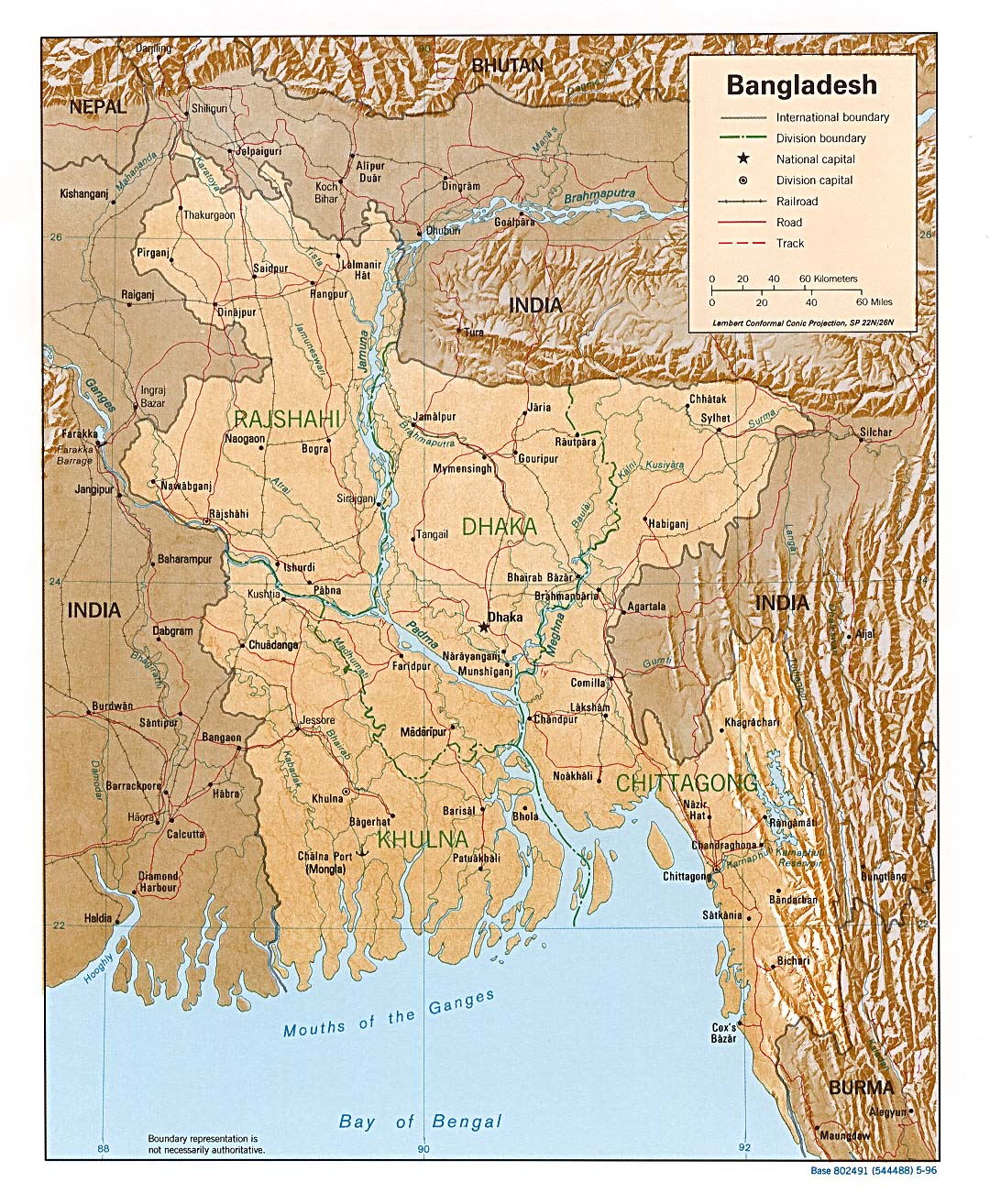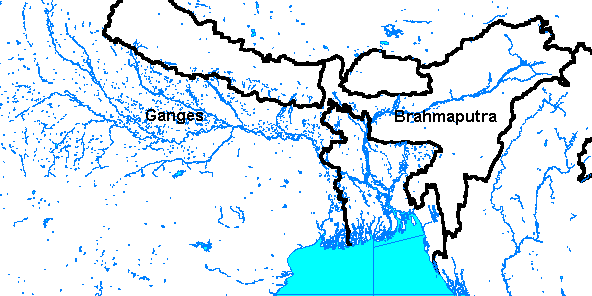
Bangladesh History and Physical Environment
Exhibit 1: Bangladesh in Geographic Context

The People’s Republic of Bangladesh is a South Asian country that gained its independence from Pakistan in 1971. It covers 143,988 square kilometers and is bounded by India on three sides and by the Bay of Bengal from the south. It also shares a small border with Burma in its southeast corner.
Exhibit 2: Historical Timeline
Bangladesh has enjoyed relative prosperity for much of its history. The rich soils of its large floodplains and its strategic position as a gateway between India and East Asia made the area bountiful in agriculture and trade. The region was also known for its prized mulsin cloth. This prosperity declined under British rule, though hopes were renewed with the formation of a sovereign state in 1971. The new Bangladesh is a democracy, but it has suffered through corrupt regimes and a series of military coups which has weakened confidence in the government. (Bornstein, 1996)
Exhibit 3 - General
Map
Exhibit 4 - Forest
Areas Exhibit
5 - River Systems



Most of Bangladesh is a flat delta at the confluence of several major river systems, the largest of which are the Ganges and Brahmaputra. The basin areas for these river systems lie mainly outside of Bangladesh such that 93% of the waters passing through the country come from outside its boundaries. Rivers cover 7% of the country’s surface. The country is very flat, with the exception of the Chittagong Hill Tracts in the Southeast. Plains cover most of the country, but forests and scrub cover the Chittagong Hill Tracts. The Sundarbans, the largest mangrove forests in the world, are found along the Southwestern coast.
Bangladesh has a humid, warm, and tropical climate which is fairly uniform across the country. The three seasons are summer, monsoon, and winter. Summer is a hot and humid season from March to June. Heavy rains occur in the monsoon season, which lasts from June to October. Winter is relatively cooler and dryer, stretching from November to March. Rainfall ranges from 55 inches to 140 inches annually, with 90% of the rainfall occurring during the monsoon season. Floods regularly occur during the monsoon season, and droughts are not uncommon in winter. Mean annual temperature is about 25 degrees Celsius, with a high of about 43 degrees. (Huq, 1994)